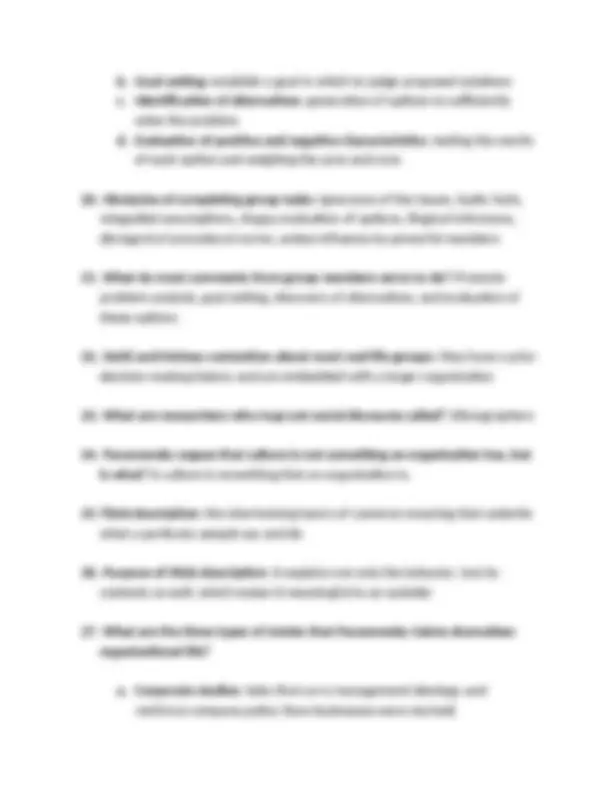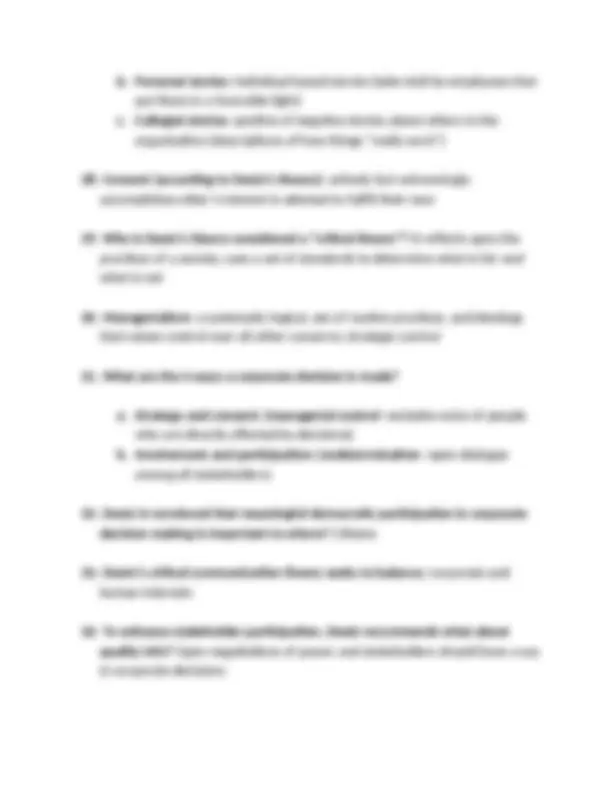





Study with the several resources on Docsity

Earn points by helping other students or get them with a premium plan


Prepare for your exams
Study with the several resources on Docsity

Earn points to download
Earn points by helping other students or get them with a premium plan
Community
Ask the community for help and clear up your study doubts
Discover the best universities in your country according to Docsity users
Free resources
Download our free guides on studying techniques, anxiety management strategies, and thesis advice from Docsity tutors
Exam 2 Study Guide Material Type: Notes; Professor: Vangelis; Class: Introduction to Communications; Subject: Communication; University: East Carolina University;
Typology: Study notes
1 / 6

This page cannot be seen from the preview
Don't miss anything!




Comm Theory 1001 Exam 2 Study Guide
communication patterns among all its members (each family member plays a one-of-a-kind game with homemade rules)
b. Goal setting: establish a goal in which to judge proposed solutions c. Identification of alternatives: generation of options to sufficiently solve the problem d. Evaluation of positive and negative characteristics: testing the merits of each option and weighing the pros and cons
b. Personal stories: individual based stories (tales told by employees that put them in a favorable light) c. Collegial stories: positive of negative stories about others in the organization (descriptions of how things “really work”)